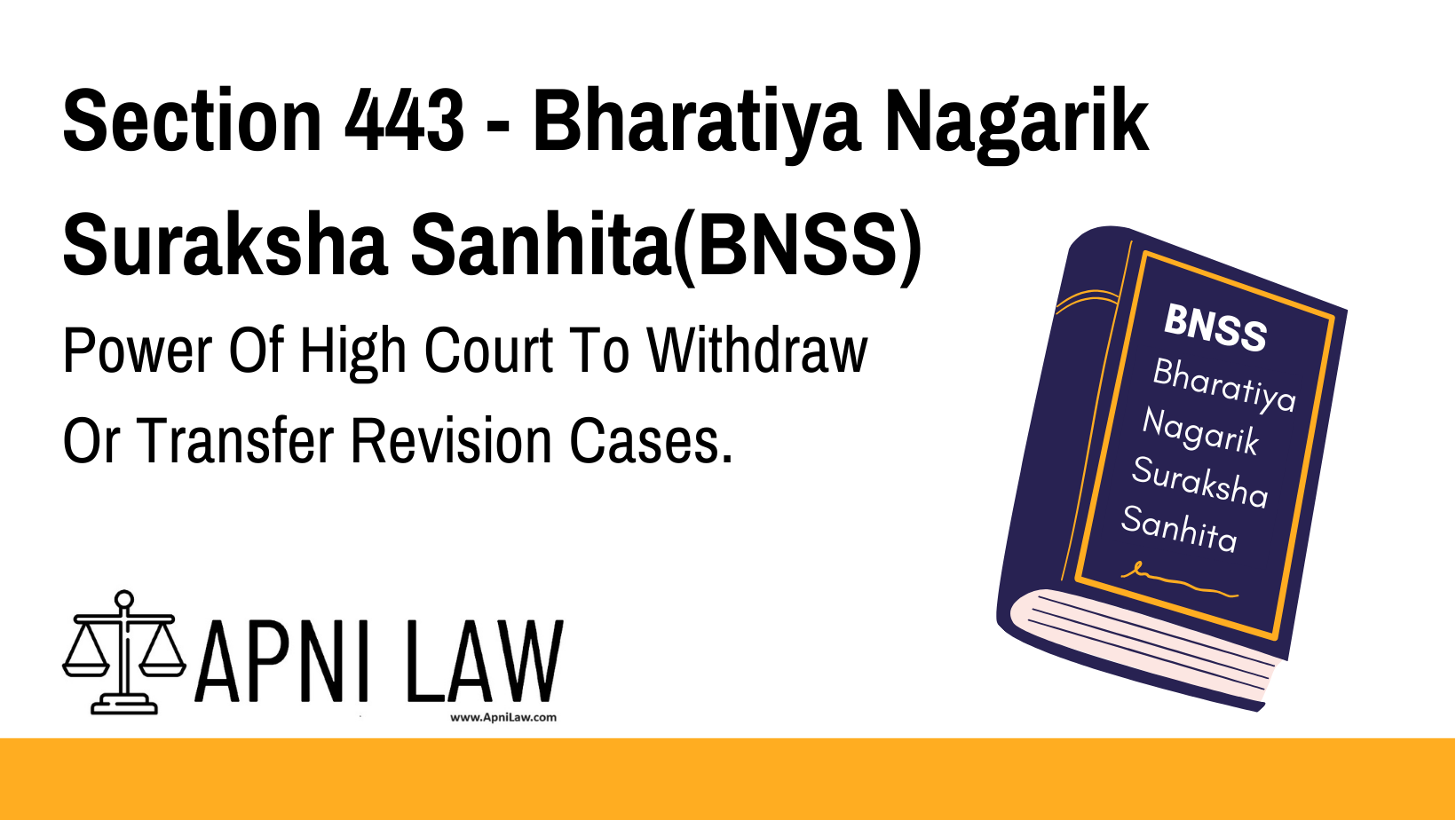Code : Section 443 BNSS
(1) Whenever one or more persons convicted at the same trial makes or make application to a High Court for revision and any other person convicted at the same trial makes an application to the Sessions Judge for revision, the High Court shall decide, having regard to the general convenience of the parties and the importance of the questions involved, which of the two Courts should finally dispose of the applications for revision and when the High Court decides that all the applications for revision should be disposed of by itself, the High Court shall direct that the applications for revision pending before the Sessions Judge be transferred to itself and where the High Court decides that it is not necessary for it to dispose of the applications for revision, it shall direct that the applications for revision made to it be transferred to the Sessions Judge.
(2) Whenever any application for revision is transferred to the High Court, that Court shall deal with the same as if it were an application duly made before itself.
(3) Whenever any application for revision is transferred to the Sessions Judge, that Judge shall deal with the same as if it were an application duly made before himself.
(4) Where an application for revision is transferred by the High Court to the Sessions Judge, no further application for revision shall lie to the High Court or to any other Court at the instance of the person or persons whose applications for revision have been disposed of by the Sessions Judge.
Explanation of Section 443 BNSS
Key Provisions and Their Purpose
- Consolidation of Revision Cases for Efficiency
- If multiple accused persons from the same trial file revision petitions in different courts, the High Court decides which court will handle them.
- This avoids conflicting judgments and ensures a fair, uniform decision.
- High Court’s Power to Transfer Revision Cases
- The High Court can take control of all revision cases if they involve important legal questions or require a higher level of judicial scrutiny.
- Alternatively, the High Court may let the Sessions Judge handle the revisions, transferring its pending cases accordingly.
- Effect of Transfer
- If a case is transferred to the High Court, it is treated as if originally filed there.
- If a case is transferred to the Sessions Judge, it is treated as if originally filed there.
- Finality of the Sessions Judge’s Decision
- If a revision case is disposed of by the Sessions Judge, the same person cannot seek revision again in the High Court.
- This prevents multiple attempts to challenge the same judgment through different courts.
Illustration: How Section 443 BNSS Works
Example 1: High Court Takes Over All Revisions
- A, B, and C are convicted in the same trial.
- A and B apply to the High Court for revision, while C applies to the Sessions Judge.
- The High Court decides that it should handle all revisions, so it transfers C’s application to itself and decides all cases together.
Example 2: Sessions Judge Handles All Revisions
- X and Y apply for revision in the High Court, but Z applies to the Sessions Judge.
- The High Court determines that the case does not involve complex legal issues and transfers X and Y’s revision applications to the Sessions Judge.
- The Sessions Judge disposes of all applications, and X, Y, and Z cannot approach the High Court again.
Common Questions and Answers on Section 443 BNSS
1. Why does the High Court have the power to transfer revision cases?
To avoid conflicting decisions when multiple persons from the same trial file revisions in different courts. It ensures uniformity in judicial decisions.
2. Can a person apply for revision in both the Sessions Court and the High Court?
No. Once a revision petition is disposed of by the Sessions Judge, the person cannot approach the High Court again for the same issue.
3. Can the High Court refuse to take over a revision case?
Yes. If the High Court finds that the case does not involve a significant legal question, it can direct the Sessions Judge to handle it.
4. What happens if a revision case is transferred to the High Court?
The High Court will handle the case as if it was originally filed there and decide the matter accordingly.
5. Can the High Court re-transfer a revision case after deciding to handle it?
No. Once the High Court has taken over a revision case, it must decide the matter itself.
Conclusion
Section 443 BNSS ensures that revision cases from the same trial are handled efficiently, avoiding conflicting judgments and ensuring judicial consistency. The High Court has the power to withdraw or transfer such cases, ensuring fair legal proceedings.
For more legal explanations, visit ApniLaw! 🚀








